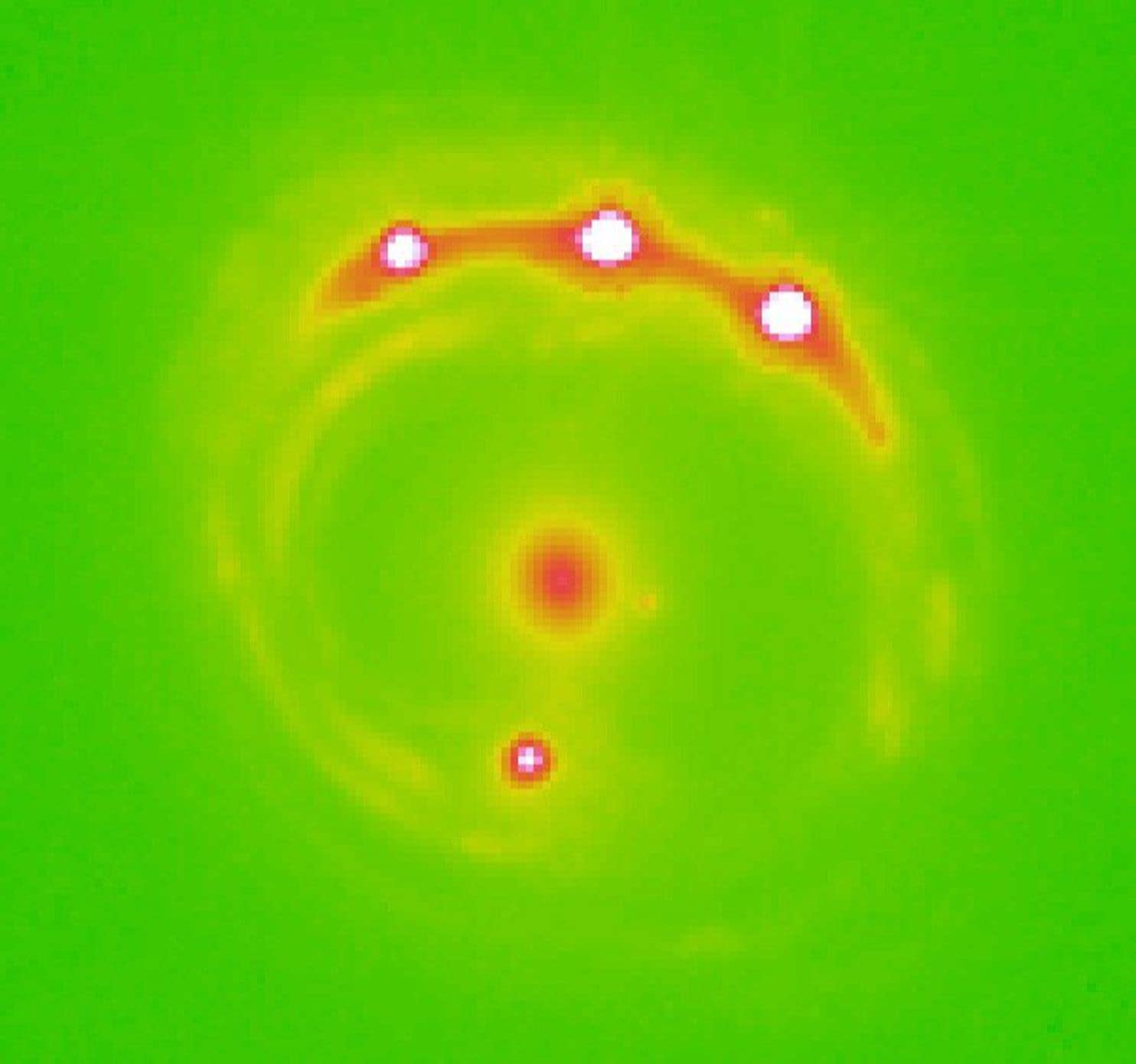Astronomers may have discovered exoplanets outside the Milky Way

The universe is immense, and a man with his weak instruments tries to grope in the dark at least the objects nearest to him. First - the planets of the Solar system, then - alien stars, then - the planets of these stars in our galaxy. Having received some experience in terms of detecting exoplanets, astronomers decided to try to do the same with another galaxy. Scientists, as far as can be judged, managed to detect several exoplanets at a distance of 3.8 billion light years from the sun.
Using data from the NASA space observatory, astronomer Xinyu Dai, astrophysicist and professor at the University of Oklahoma, discovered several planets outside the Milky Way with his team. According to him, the sizes of these planets are different - some are no larger than our Moon, others are about the same as Jupiter.
Astronomers use several methods to detect planets distant from us. Since they are too far from the Earth to use conventional optical telescopes, other methods come into play. According to the project participants, Einstein’s theory of relativity helped them.
')
One of the provisions of this theory is that the light may deviate due to strong gravitational effects. It is a question of gravitational lensing, an effect that Einstein himself predicted the possibility of using it for some purpose or another. So, the lens, which allowed Earth scientists to observe distant objects - this is just a galaxy, located 3.8 billion light years from Earth. Until now, the effect of gravitational microlining was used only to search for planets that rotate around the stars of the Milky Way.
The mass of the galaxy, which is located at a distance from us, is so great that the light, passing by it, changes the direction of "movement" and some characteristics. By the way, with the help of the lensing effect, scientists in 1991 managed to detect a quasar located 6 billion light years from Earth, and also to measure its characteristics. This quasar is a very bright object with a supermassive black hole RX J1131−1231 in the center.
So, the light that comes to us from the above quasar goes to us through the galaxy, which serves as a kind of gravitational lens. Studying the radiation characteristics of a quasar that passed through the lens, experts realized that the detected energy shifts are explained by the presence of exoplanets between the Earth and the quasar.
In a university press release, research participants stated in an increasingly less formal language, stating that the very process of detecting remote exoplanets is “a very cool science . ” The photo, which was obtained by scientists, in their opinion, will allow the development of planetology further. The photo shows the central elliptical object - a galaxy in which stars are located with exoplanets around. The white dots at the top and the white mark at the bottom are the radiation emanating from the black hole.
According to scientists, distant galaxies contain trillions of exoplanets, many of which can be inhabited or potentially inhabited. Some colleagues of the authors of the study expressed their support. But few show enthusiasm. A large number of experts believe that the study is quite interesting, but the data obtained by astronomers can be interpreted in different ways. For example, the detected objects may belong to our galaxy.
By the way, not so long ago, NASA reported on the results of cooperation with the telecommunications giant Google. The partner provided the Agency with machine learning technology that allows automatic processing of a huge amount of data sent to Earth by the Kepler telescope. This method gave astronomers a lot, and one of the results is the detection of the eighth exoplanet in the Kepler-90 system .
All the planets in this system are found by means of transit photometry. This method makes it possible to detect the exoplanet when it passes through the disk of its star. At this time, the luminosity of the star for some time decreases and astronomers fix the planet (well, or another object).
Source: https://habr.com/ru/post/371239/
All Articles